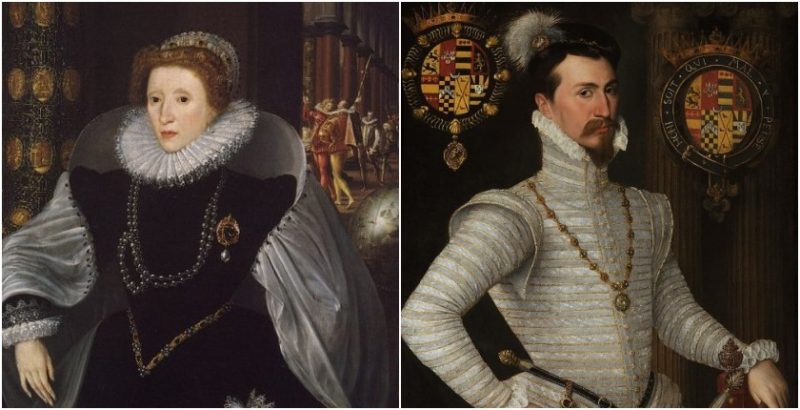Queen Elizabeth I of England (reign: 1558-1603) famously never married and steadfastly defended her chastity, protecting her reputation and defending her crown. Having never had children, her throne passed to her cousin’s son, King James VI of Scotland, who subsequently became King James I of England.
Elizabeth was often referred to as the “Virgin Queen” – dramatically different from her philandering father Henry VIII. She is known to have stated, “I will have but one mistress here [referring to herself], and no master.”
However, both during and since her reign the question of whether or not Elizabeth took any lovers at all has lived on, particularly in reference to Robert Dudley, the Earl of Leicester.
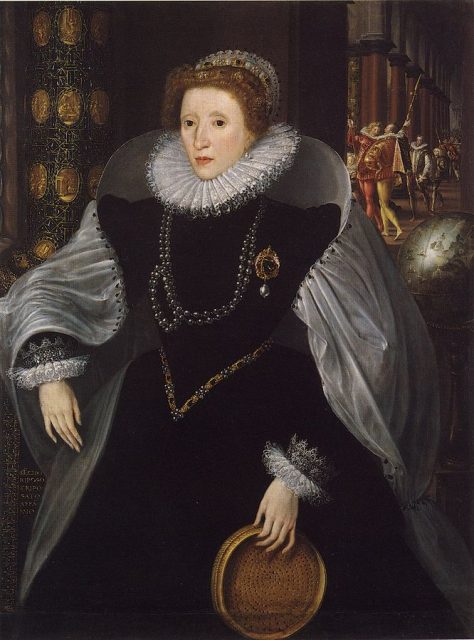
So secretive was Elizabeth’s personal life (rightly so) that the King of France in Elizabeth’s own time declared it to be one of the three great questions of Europe.
Elizabeth and Robert Dudley had known each other since childhood. His father, the Duke of Northumberland, had been Protector during the short reign of Elizabeth’s half-brother King Edward VI, and Robert was one of his childhood companions.
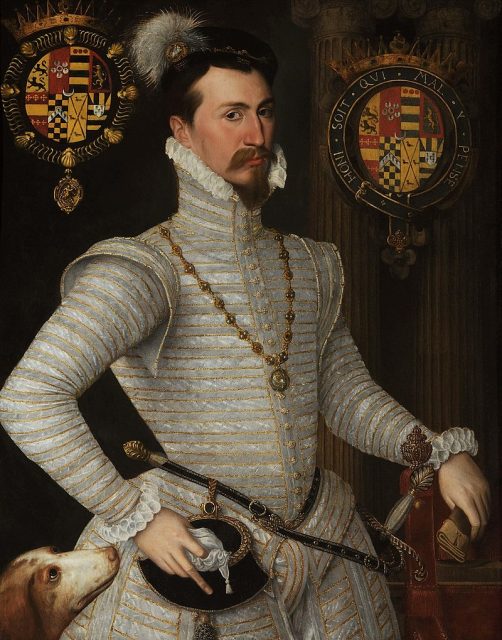
Later, Robert was imprisoned and condemned to death in 1553 as retribution from Mary I, Elizabeth’s older half-sister, after trying to stage a coup against the queen (his father had already been executed for the same reason). His time in the tower coincided with that of Elizabeth, herself imprisoned by Mary, who suspected Elizabeth of plotting against her.
Elizabeth lived in constant fear for her life during her sister’s time on the throne, and Robert remained loyal to her. They spent many hours together and had several common interests including dancing and hunting. This friendship was the source of much gossip in Princess Elizabeth’s household, particularly as Robert was married.
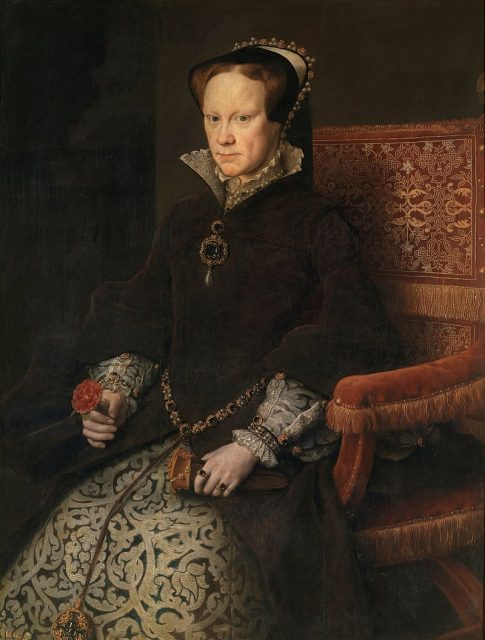
In 1558, when Mary I died and Elizabeth I ascended to the throne, Robert was appointed as her Master of Horse. This position, which held some prestige, also meant that Robert would be in regular attendance with the Queen.
However, her new role meant they could no longer meet in private. They were looked upon now not only by the royal household but also by the entire kingdom and beyond. According to Elizabeth, “a thousand eyes see all I do.” Not much has changed for the royal family.
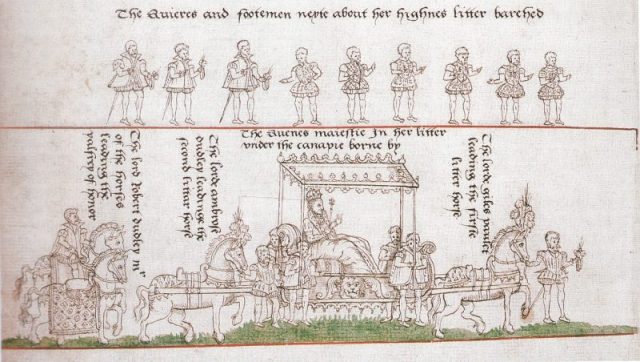
Despite near constant pressure for her to marry and give birth to an heir, Elizabeth steadfastly refused — and she made it quite clear that Robert was her favorite. In her palace, Robert’s rooms were moved next to hers, causing scandal across England as well as Europe.
This was used by Elizabeth’s cousin and rival, Mary, Queen of Scots, who told another noblewoman, Bess of Hardwick, that Robert had been seen visiting Elizabeth’s rooms many times.
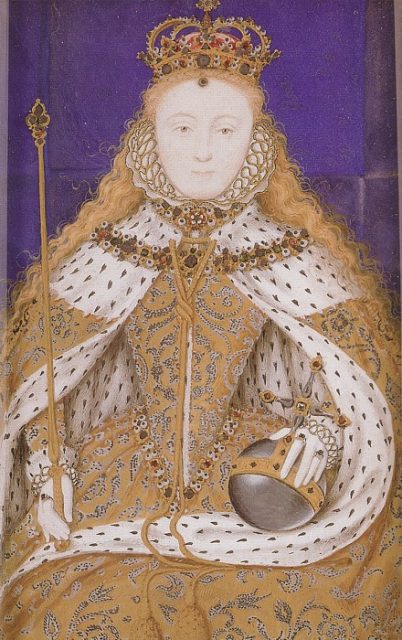
This was made even worse when, in 1587, a man named Arthur Dudley, while visiting the court of Philip II in Spain, claimed to be the illegitimate child of the Queen and Robert.
His story included a time of conception – around 1561 – when Elizabeth was ill and bedridden, her body mysteriously swollen. Arthur was also able to name a servant who took him from Hampton Court Palace and raised him as his own before confessing all on his deathbed in 1583. However, there was no real evidence to confirm the story.
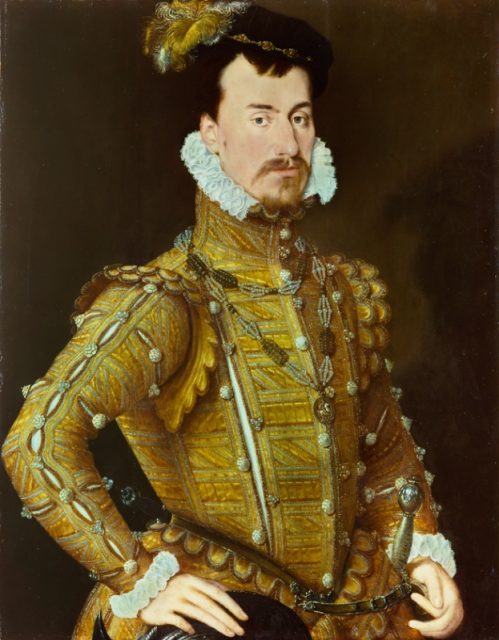
To add fuel to the already brightly burning gossip fire, Robert Dudley’s wife died under mysterious circumstances in 1560. While Robert was constantly by Elizabeth’s side, his wife was not, living apart from her husband.
Robert pressed for an impartial inquiry, which found that it was an accident: his wife had fallen down the stairs, breaking her neck. However, it was still speculated that Robert had arranged his wife’s demise, in order to be able to marry Elizabeth.
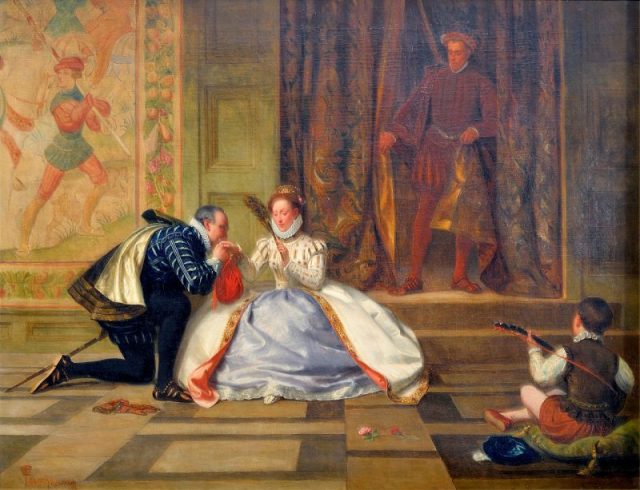
While many historians and a coroner’s report found in the National Archives have all pointed to an accidental death, it did not prevent nobles and politicians at the time from using it to try desperately to prevent the Queen from marrying him.
Notwithstanding this pressure, Robert remained close to the Queen, despite his suggestion that she would be better off without him. As she told the French ambassador, “I cannot do without my Lord Robert for he is like my little dog.” Thus he remained by her side as her “Bonny Sweet Robin”. Elizabeth even came up with a plan for him to wed Mary, Queen of Scots, but only on the condition that the pair lived with her at court. It did not come to fruition, however.
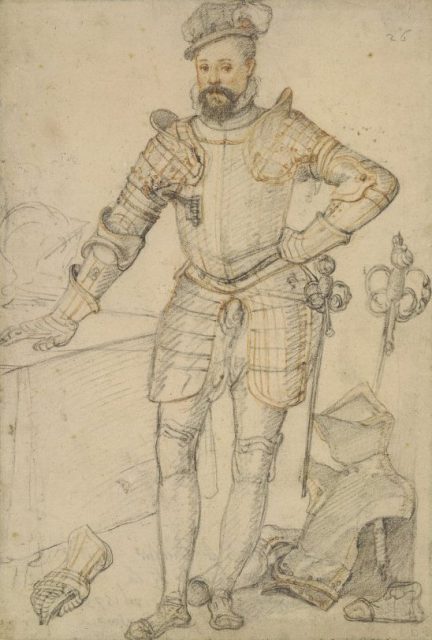
In 1562, Elizabeth became ill with smallpox and requested that Robert be made Protector of the Realm. However, her health improved, and he was instead made a privy councilor.
Their friendship and close companionship continued for many years. Robert was given the title of Earl of Leicester in 1564 and a gift of Kenilworth Castle, which the queen visited regularly.
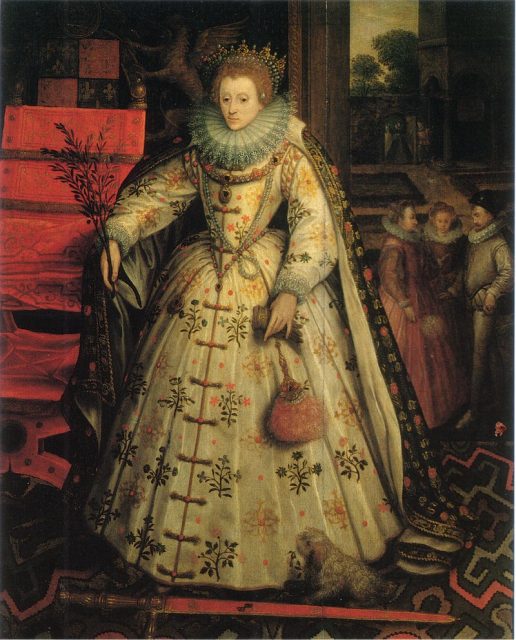
In 1578, with no hope of marrying Elizabeth in the future, Robert secretly wed her cousin, Lettice Knollys. Elizabeth was furious, however, and never spoke with her cousin again.
The marriage did not last long, as Robert died of suspected stomach cancer in 1588. Understandably devastated by the loss of her dearest and closest companion, the queen barricaded herself in her rooms and refused to see anyone. His last letter to her, which she noted directly on it after he had died, was buried with her in 1603.
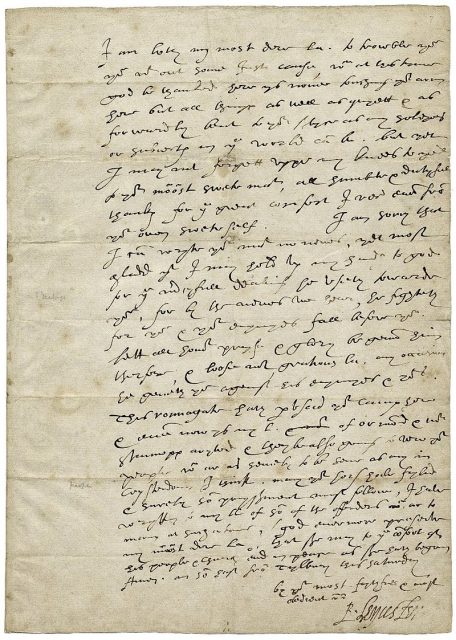
Whether Elizabeth I and Robert Dudley were indeed lovers remains a mystery to this day; there is no hard evidence to provide confirmation one way or the other. However, when Elizabeth believed she was dying, she solemnly swore, “though she loved [Robert] dearly…nothing unseemly had ever passed between them.”
Read another story from us: Elizabeth I Files: The Conspiracy Theory Surrounding her True Gender
Nonetheless, in a court and era full of intrigue, backstabbing and scheming (she had been imprisoned by her own sister after all), it is not surprising that Elizabeth would remain so close to one of her oldest and most loyal friends, Robert. They did not need to be lovers to share a deep love for one another.
